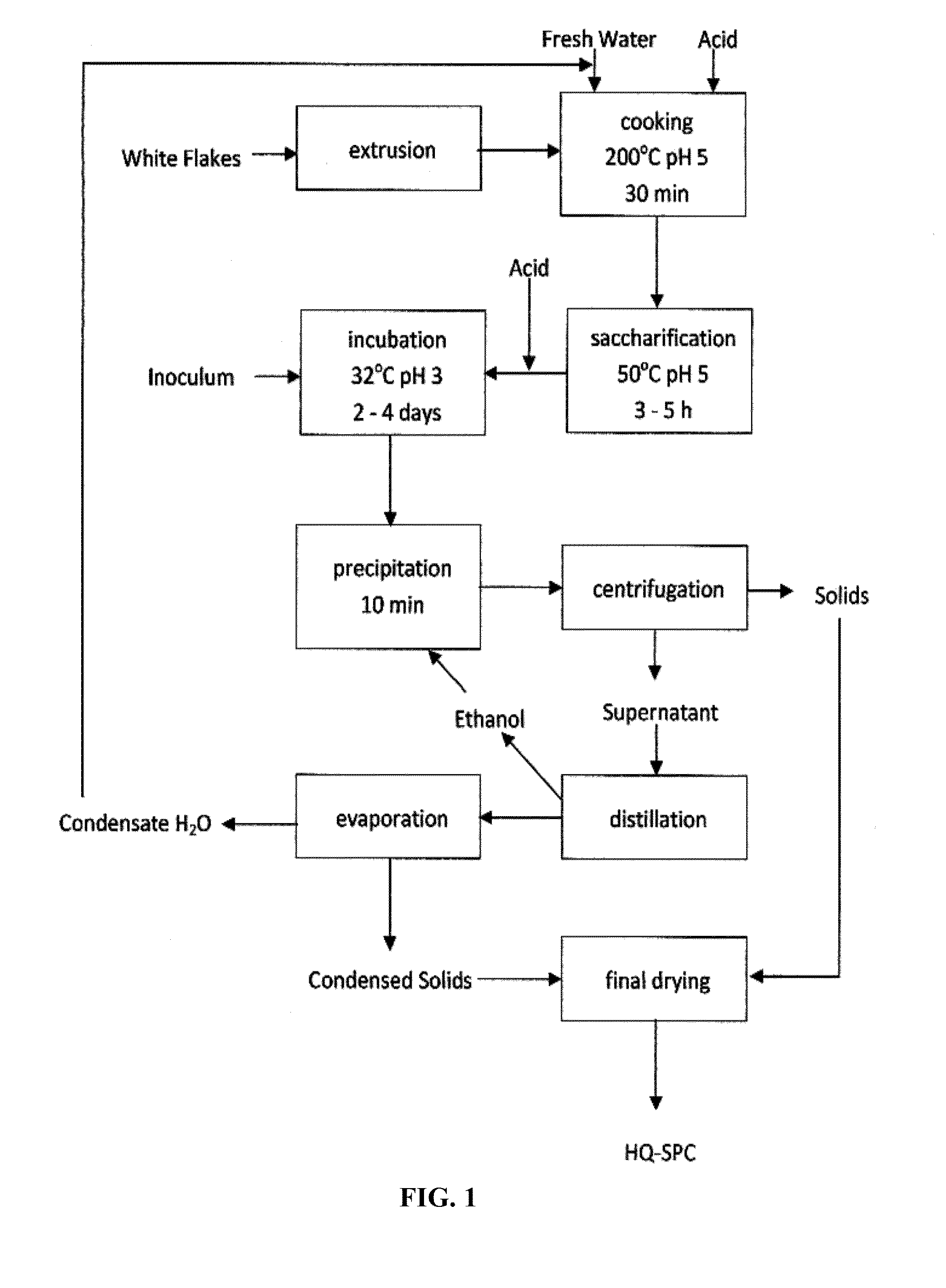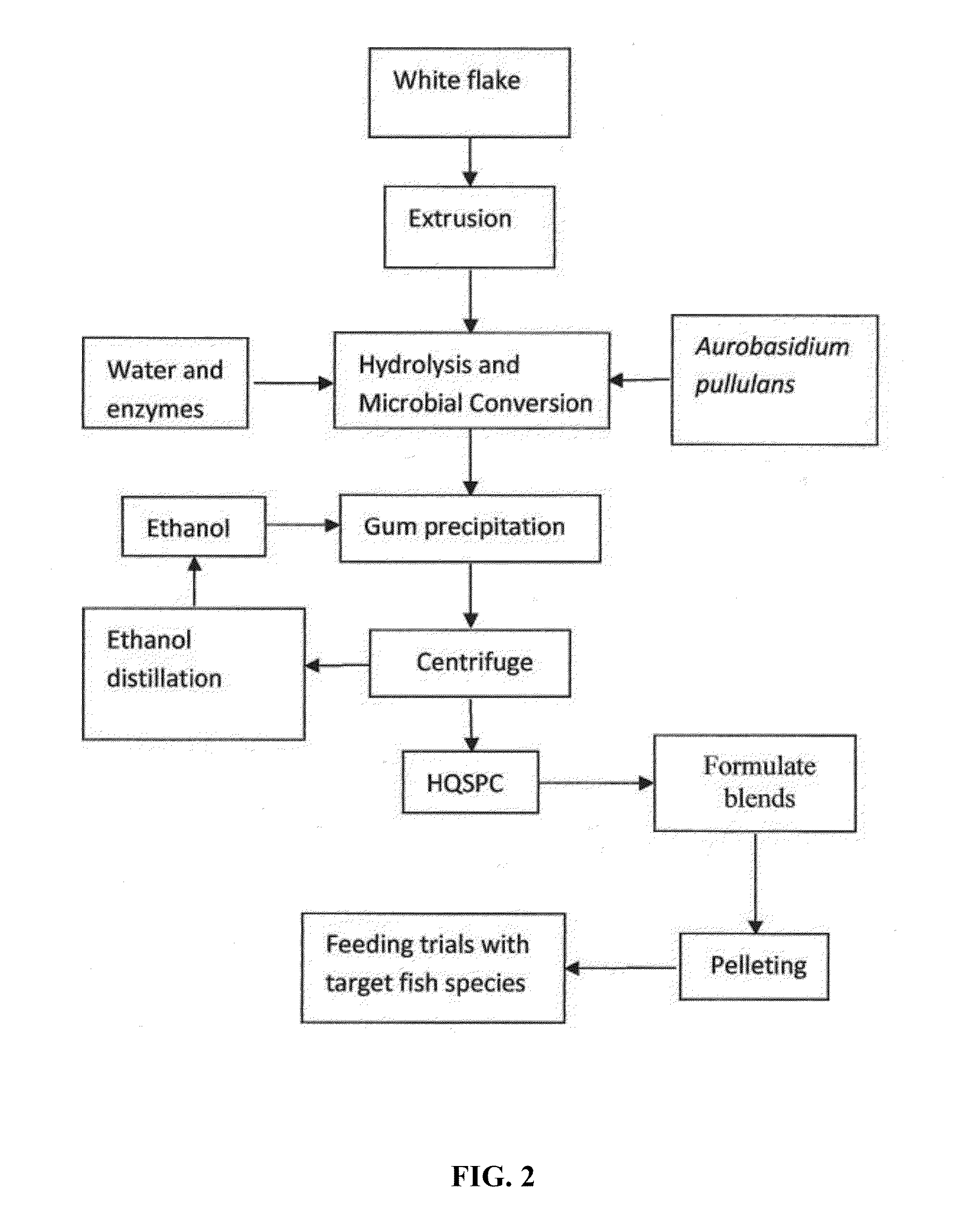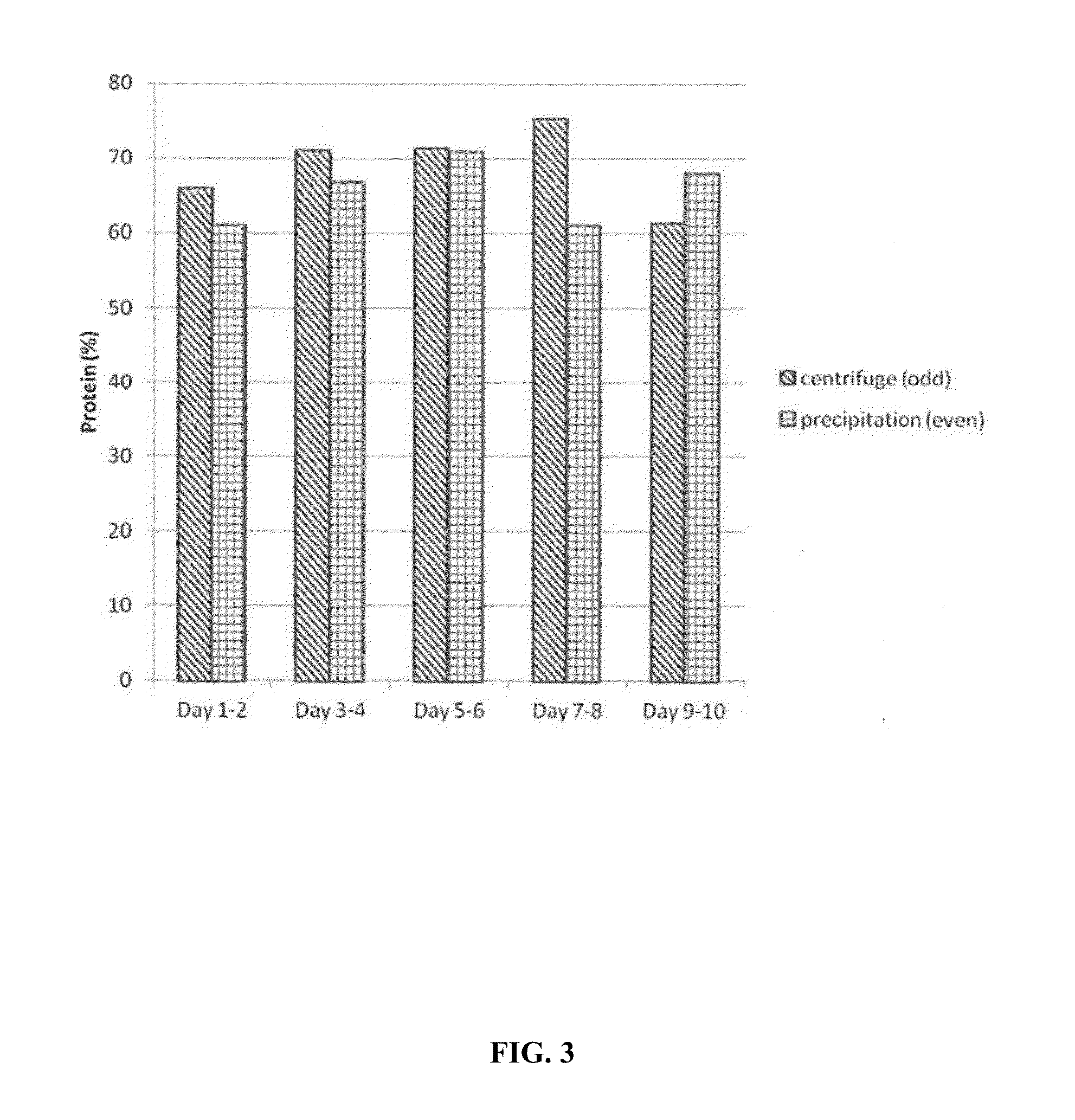Microbial-based process for high-quality protein concentrate
a technology of high-quality protein and aerobic incubation, which is applied in the field of incubation processes, can solve the problems of current solvent extraction process cost, unsustainable trend, and deficiency of critical amino acids (e.g., taurine) required by carnivorous marine fishes
- Summary
- Abstract
- Description
- Claims
- Application Information
AI Technical Summary
Benefits of technology
Problems solved by technology
Method used
Image
Examples
example 1
High Quality Soy Protein Concentrate (HQSPC)
[0111]FIG. 1 shows the overall approach to pre-treating white flakes, converting sugars into cell mass (protein) and gum, recovering HQSPC and generating aquafeeds (FIG. 2), and testing resulting aquafeeds in fish feeding trials. White flakes were first subject to extrusion pretreatment (BRABENDER PLASTI-CORDER SINGLE SCREW EXTRUDER Model PL2000, Hackensack, N.J.) at 15% moisture content, 50° C., and 75 rpm to disrupt the structure and allow increased intrusion of hydrolytic enzymes during subsequent saccharification. These conditions provided a shearing effect against the rigged channels on both sides of the barrel, and it had been observed previously that this resulted in 50-70% greater sugar release following enzymatic hydrolysis. Extruded white flakes were then ground through a 3 mm hammermill screen, blended with water to achieve a 10% solid loading rate, and adjusted to pH 5. After heating to pasteurize or sterilize the mash, the mas...
example 2
Production of HP-DDGS Using Microbial Conversion
[0176]The effects of extrusion on improving saccharification of DDGS using a single screw extruder (BRABENDER PLASTI-CORDER EXTRUDER Model PL2000, Hackensack, N.J.) with barrel length to screw diameter of 1:20 and a compression ratio of 3:1 was investigated (FIGS. 4 and 5). It was determined that 25% DDGS moisture content, temperature of 100° C. to 160° C., and screw speed of 200 rpm resulted in a 36% sugar recovery from corn fiber (FIG. 5). The performance of various NOVOZYME lignocellulose deconstructing enzymes was separately evaluated and it was found that 6% CELLIC CTEK2 (per gm glucan) and 0.3% CELLIC HTEK2 (per gm total solids) resulted in sugar recoveries up to 70%. These pretreatment and saccharification conditions may be used to generate HP-DDGS. Next options such as co-culturing with cellulase-producers to reduce the need for added enzymes may be carried out, as well as using fed-batch bioreactors to reduce processing costs....
PUM
| Property | Measurement | Unit |
|---|---|---|
| temperature | aaaaa | aaaaa |
| thickness | aaaaa | aaaaa |
| pH | aaaaa | aaaaa |
Abstract
Description
Claims
Application Information
 Login to View More
Login to View More - R&D
- Intellectual Property
- Life Sciences
- Materials
- Tech Scout
- Unparalleled Data Quality
- Higher Quality Content
- 60% Fewer Hallucinations
Browse by: Latest US Patents, China's latest patents, Technical Efficacy Thesaurus, Application Domain, Technology Topic, Popular Technical Reports.
© 2025 PatSnap. All rights reserved.Legal|Privacy policy|Modern Slavery Act Transparency Statement|Sitemap|About US| Contact US: help@patsnap.com



